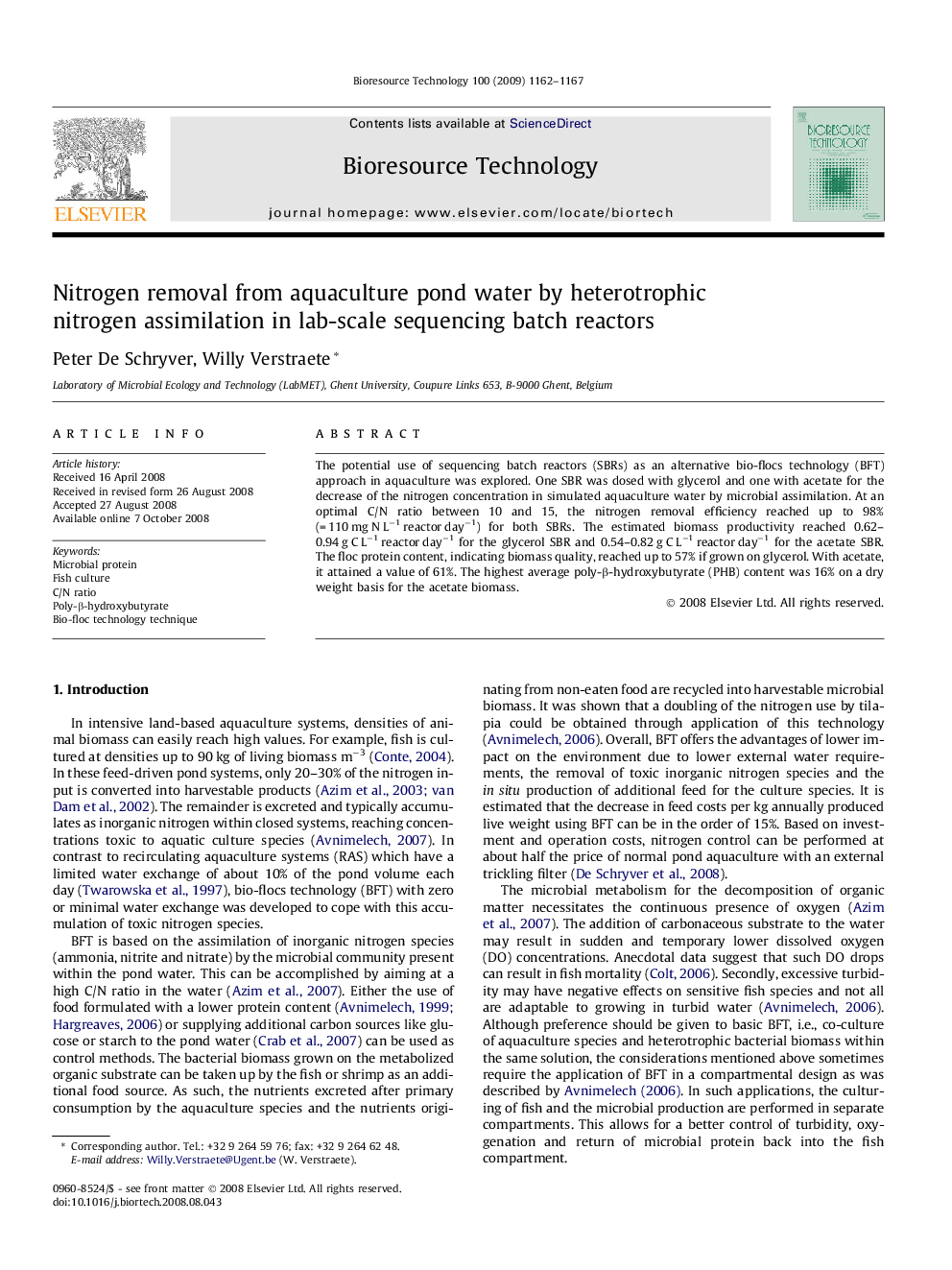| Article ID | Journal | Published Year | Pages | File Type |
|---|---|---|---|---|
| 686104 | Bioresource Technology | 2009 | 6 Pages |
The potential use of sequencing batch reactors (SBRs) as an alternative bio-flocs technology (BFT) approach in aquaculture was explored. One SBR was dosed with glycerol and one with acetate for the decrease of the nitrogen concentration in simulated aquaculture water by microbial assimilation. At an optimal C/N ratio between 10 and 15, the nitrogen removal efficiency reached up to 98% (= 110 mg N L−1 reactor day−1) for both SBRs. The estimated biomass productivity reached 0.62–0.94 g C L−1 reactor day−1 for the glycerol SBR and 0.54–0.82 g C L−1 reactor day−1 for the acetate SBR. The floc protein content, indicating biomass quality, reached up to 57% if grown on glycerol. With acetate, it attained a value of 61%. The highest average poly-β-hydroxybutyrate (PHB) content was 16% on a dry weight basis for the acetate biomass.
